

Pesto z aksamitki – Trochę Inna Cukiernia. Aksamitki to jadalne kwiaty, które mają bardzo ciekawy smak.
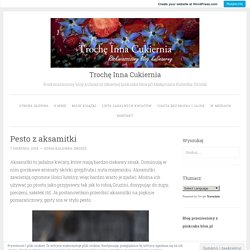
Dominują w nim gorzkawe aromaty skórki grejpfruta i nuta majeranku. Aksamitki zawierają ogromne ilości luteiny, więc bardzo warto je zjadać. Można ich używać po prostu jako przyprawy, tak jak to robią Gruzini, dosypując do zupy, pieczeni, sałatek itd. Róża - konfitury z płatków róż. - Klaudyna Hebda Blog. Top 20 Flowers You Can Eat. Posted on: April 30, 2014 / It is common to see flower petals used in teas or in food decorations, but did you know that some of the flowers are also edible.

Flowers can be a nice addition to colour and flavour your food. Spicy flower petals such as chive blossoms can be used in pizza dough or flower petals can be used making homemade ice cream. There are plenty of options, all you need to be is creative. It is very important to eat flowers safely. Kaisu Johansson. Dzikie zioła – Chwasty od Kuchni. Dzikie zioła. Co z nimi ? – Chwasty od Kuchni. Aktualnie przeżywamy rozkwit dzikich ziół pod wpływem wiosny i zbliżającego się lata.
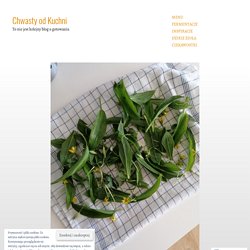
Chwasty od Kuchni – To nie jest kolejny blog o gotowaniu. 20+ Edible Weeds in Your Garden (with recipes!) Eating edible weeds is an easy way to increase your garden’s productivity.
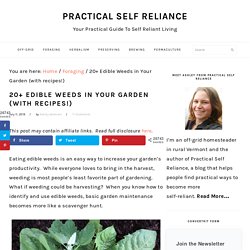
While everyone loves to bring in the harvest, weeding is most people’s least favorite part of gardening. What if weeding could be harvesting? When you know how to identify and use edible weeds, basic garden maintenance becomes more like a scavenger hunt. Having children makes you think a lot about your own actions and motivations. Dania obiadowe Archives - 1000roślin. Eat Your Weeds: 10 Delicious Invasive Plant Species. Once considered a nuisance, more and more “weeds” are making their way into the kitchen and onto the menus of high-end restaurants Farmers and gardeners are giving up fighting many of the invasive plants they once considered “weeds,” and selling them to chefs, CSAs and health food stores, making better profit for less labor.
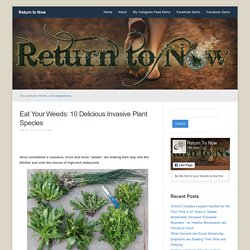
Not only are these weeds making them more money than many of their traditional crops, because of their “invasive” nature, they take no work at all to grow. Invasive plant species produce large quantities of seeds that are spread long distances by birds, wind or humans. They thrive where traditional agricultural crops can no longer grow because of damaged soil and repair the soil with their long, dense root systems. While most farmers hate them for competing with their labor-intensive, annual crops, New York City forager, chef and author Marie Viljoen encourages them to give in to the free food Mother Nature is providing without them so much as lifting a hoe. Food for Free.
Here are three more plants from the 'survival' list.
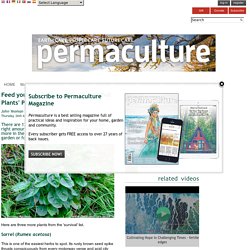
Sorrel (Rumex acetosa) This is one of the easiest herbs to spot. Its rusty brown seed spike thrusts conspicuously from every motorway verge and acid city soil from summer through to spring. And it's no matter if its seed head and long spear-shaped leaves should be confused with the very similar spike but broader leaves of dock, its near cousin.
Dock is edible, although formidably bitter. Sorrel is high in vitamins A and C, and many minerals, especially iron. Feed yourself for free-1. Out of the many hundred edible British foods detailed in the best 'wild plant' guides, just these 12 will provide all you truly need, and more, for a continual fresh food supply.

The advantage these 12 have over their 400 edible wild cousins is abundance, resilience, versatility and ease of recognition. Dandelion (Taraxacum officinale) Compared with an equal weight of lettuce, dandelion has three times the vitamin C, four times the protein, carbohydrate, fat, calcium, iron and vitamin B, five times the phosphorous - and an astounding 12 times the vitamin A. After that shopping list, it's almost surprising to hear it's good to eat as well.
Eat Your Weeds: 10 Delicious Invasive Plant Species. Wild Plants You Can Eat: A List of Edible Wild Plants. Knowing what wild plants you can eat and other things to do when disasters strike will minimize the difficulty to survive and will let you live a normal daily life.
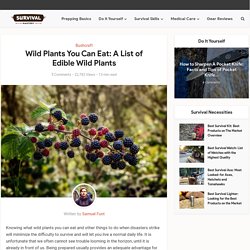
It is unfortunate that we often cannot see trouble looming in the horizon, until it is already in front of us. Being prepared usually provides an adequate advantage for survival not just in the wild but in our very own backyard. We must know what plant resources are available for us to use when the proper time comes. Knowledge of plants and their primary uses are part and parcel of survival skills which are practical know-hows and are essential for one’s survival.
Foraging Spruce Tips (and Other Conifer Tips) Spruce tips have a bright, citrus flavor that works well in both savory and sweet dishes.

Almost all conifer tips are edible, and the only exception is yew trees. Pine and fir tips have their own unique taste, and as an added bonus, all conifer tips have medicinal properties. Conifer Tips ~ From left to right: Hemlock tips, Spruce Tips, Young Fir Tips, Older Fir tips and Pine Shoots A spruce tip is the new spring growth at the end of a branch. The tree hunkers down for winter, but then in the spring they send out tender (and flavorful) new growth. Vilda växter – Vilda och odlade köksväxter. Nejlikrot är en grönsaksom var vanlig vid odling på 1500-talet.
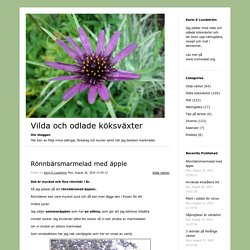
Odlingen upphörde och den föll i glömska, som många andra grönsaker. Men nejlikrot hade blev förvildad och i dag växer den upp till Dalälven och efter Norrlandskusten på skuggigaställen i snår, lundar, som sk ogräs i parker och trädgårdar och hos mig under mina vinbärsbuskar. Örtskolan. (3) Brandnetelzaden, oogst en verwerking - Harvesting and processing nettle seeds (enable subtitles) Utleniana herbata ziołowo-kwiatowa – Trochę Inna Cukiernia. Rallarrossaft: Så gör du den läskande drycken. Läskande att dricka som den är, med bubbelvatten eller i en härlig sommardrink. Somliga påstår att rallarossaft är den bästa sommardrinken. Så enkelt gör du den. Läs också: Älggrässaft med smak av citron Denna ljuvliga sommarsaft av rallarrosor brukar matkreatören Eva Gunnare i Jokkmokk göra. Här bjuder hon på receptet. (3) Jak odróżnić rumianek od rumianu, maruny i złocienia. (3) Maki i chabry. (3) Nalewka "sianówka" smakuje jak żubrówka z pospolitej trawy tomki wonnej. (3) Szarłat na dziko.
(3) Tkemali gruziński sos z mirabelek. (3) Tkemali gruziński sos z mirabelek. (3) Cebulki czosnku niedźwiedziego. (3) Mirra czyli dysfania Schradera (Dysphania schraderiana) (3) Ślaz dziki cenna roślina jadalna. (3) Świat według Łukasza. Ät dig mätt på naturens skafferi. Tina Lövrander Frida Hedin drar på sig högskaftade gummistövlar och travar ut i naturens vilda skafferi, i Börjetrakten strax utanför Uppsala.
Hon är biolog och naturvårdsrådgivare på Hushållningssällskapet. Tillsammans med kollegan Karin Olsson, kock och matkonsult, håller hon kurser om naturens ätliga vilda växter. – Folk vet att man kan göra soppa på brännässlor, men där tar kunskapen oftast slut, säger Frida Hedin. I vägkanten breder löktraven ut sig som ogräs längs en häck. BILD: Tomas Lundin | Besk. . – Liksom alla örter kan man plocka löktrav från morgonen, när daggen försvunnit, fram till tolv. En svart katt med vita tassar smyger fram och sticker nyfiket ner nosen i hennes korg.
Många misstar vitplister för brännnässla, men när de blommar ser man skillnad. Vi har just passerat några blommande slånbuskar när Frida Hedin böjer sig ner över älggräs som ännu inte blommar. BILD: Tomas Lundin | Älgört. Kwiaty jadalne i zioła – Roślinne Porady. Forsycja zbieraj: kwiaty od marca do końca kwietnia.